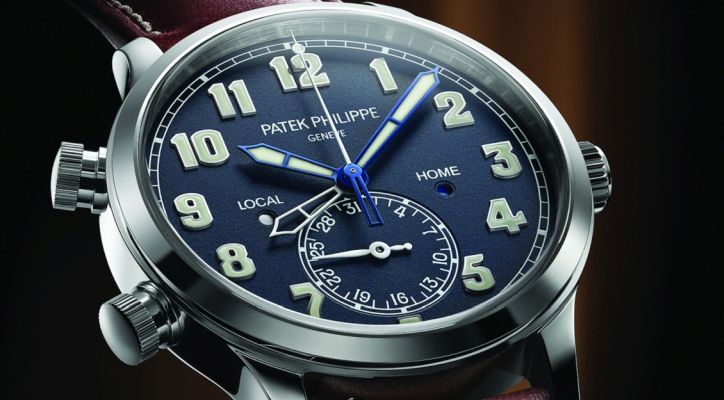
Patek Philippe has first unveiled the self-winding Calatrava Pilot Travel Time (ref. 5524) collection during the Baselworld 2015 show. Combining in the same package a ‘historic’ dial layout of a 1930s pilot’s watch with a meticulously sculpted white gold body that only the modern tech makes possible, this is one of the most notable timekeepers presented at the trade fair. Also, there is an in-house self-winding movement that makes one drown in his own saliva while searching for one’s credit card.
Mechanism
According to the official specs, the Pilot Travel Time sports the Caliber 324 S C FUS automatic movement (we have already seen it animating their GMT-enabled Aquanaut 5146 model). This is, in fact, the good old Caliber 324 S C.
The movement also powers other members of the collection (like, for example, this compact Calatrava 5227 three-hander with date), but features a second time-zone complication module riding atop of it. There is also a different calendar module replacing a more traditional calendar wheel visible through a tiny aperture with a more convenient sub-dial at 6 o’clock.
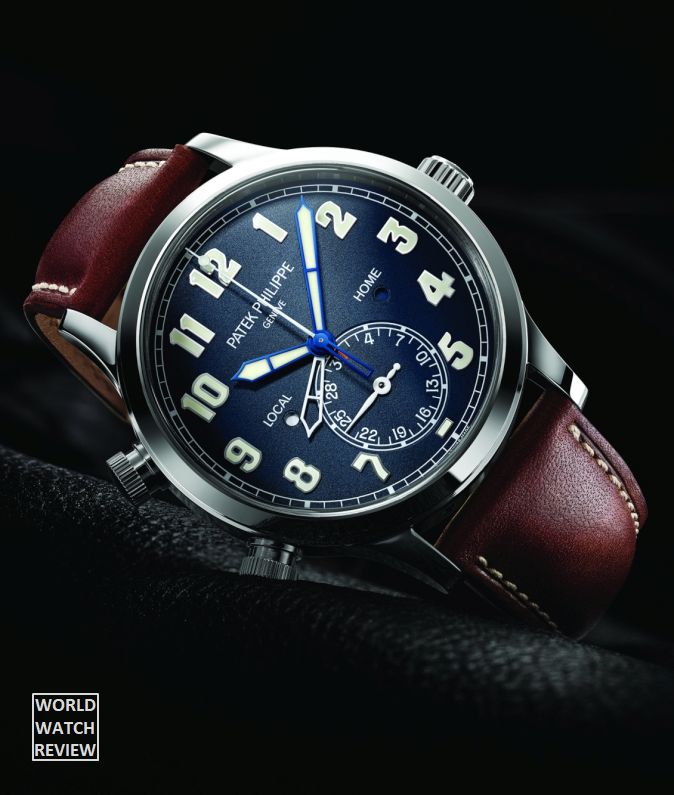
The GMT complication allows adjusting the time in a “home” zone without affecting the time-keeping abilities of the base movement that Patek Philippe first introduced back in 1959 and perfected in 1996. This particular iteration features a second hour-hand that looks almost like the standard one but is open-worked. It also shows the “home time” in the usual 12-hour format, which is, for most people, a lot more comfortable than the 24-hour military scale that we often see on less expensive models that are powered by all sorts of ETA movements.
To make using the complication even more comfortable, the Cal. 324 SC FUS also features two day/night indicators at both halves of the dial. They are, in fact, just a couple of disks with the light and dark parts representing days and nights (I guess here I am being a Captain Obvious).
First introduced in 2004, the base movement enjoys a good reputation among owners both in terms of overall long-term reliability and accuracy.
Dial
Designed in the style of a pre-WWII “aviator”, the ref. 5524 predictably features a clean, easy-to-grasp at a single glance dial layout. The Arabic numerals are bold and, given the amount of lume on them, must be bright in the darkness. The minute hand has a thin tip that is long enough for it to precisely indicate time on the finely printed minute track. At the same time, the tip is short enough to look well-proportioned to the hand itself.
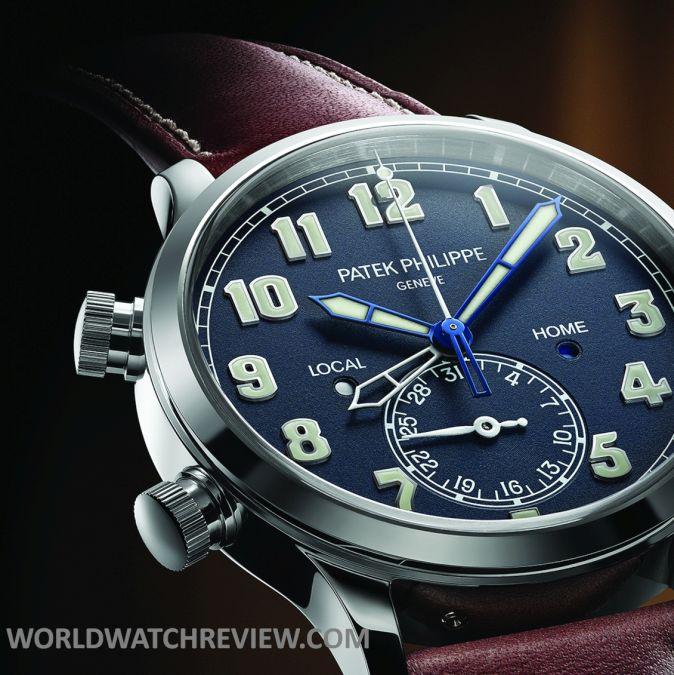
From the point of view of pure legibility, the only issue here is the circular calendar display that some may find not that easy to read, after all. However, this is a common issue for this sort of smallish indicator, so I don’t see it as a problem. It sort of comes with the territory.
I have seen a number of comments that, condescendingly, compare this new Calatrava Pilot Travel Time to the last year’s limited-edition Zenith Pilot Montre d’Aeronef Type 20 GMT 1903.
Trying to compare these two timekeepers is like comparing a Mercedes-Benz S-Class Guard with a Humvee on the ground that both vehicles have four wheels, an internal combustion engine, and, of course, a healthy amount of armor. That is just not how you do it.
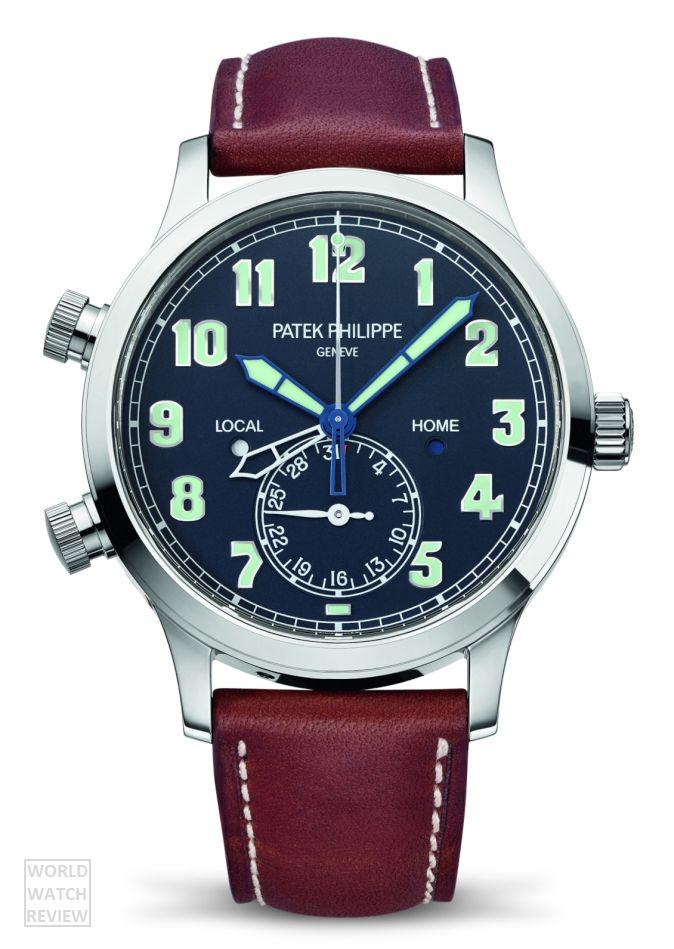
The only thing that reminds me of the aforementioned Zenith model is the overall styling of the dial with those vintage-styled hands and Arabic numerals that are covered with varnished Superluminova. That’s basically all.
However, if you look closely, you will immediately notice many visual differences. While the Montre d’Aeronef was made deliberately rugged with its worn-look leather strap and colored lume that looks like it was applied sixty years ago, the Calatrava Pilot is primarily a dress watch that also happens to be styled as an “aviator”.
While the Zenith model needs you to wear something like a vintage sheepskin bomber jacket to look organic in all of its oversized glory, the Patek Philippe requires an expensive suit that costs more than an average Omega Speedmaster.
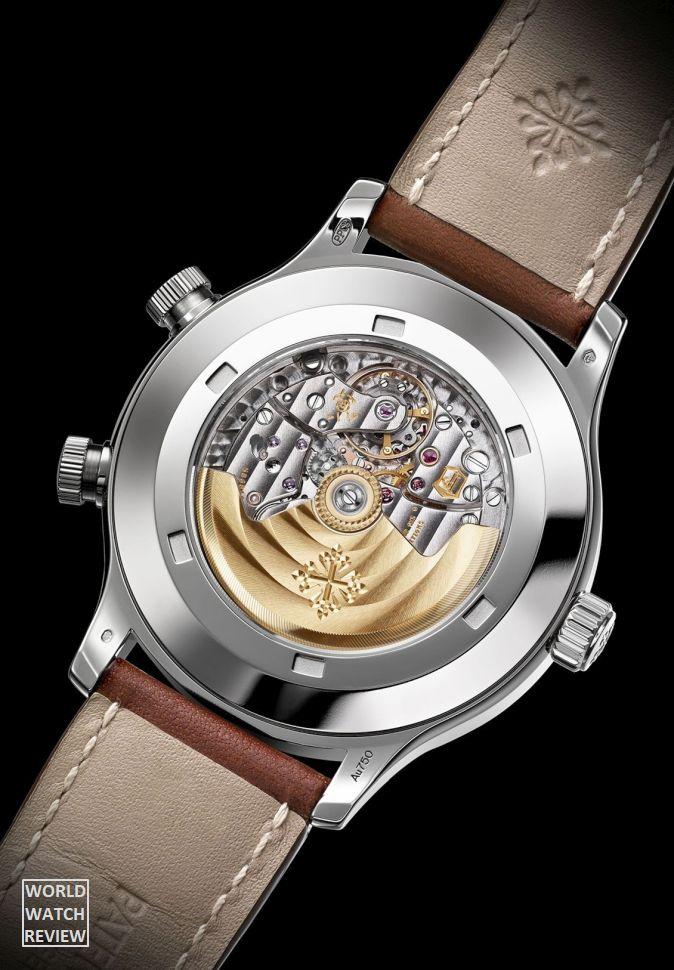
Case
The second is, of course, the physical dimensions.
Compared to the 48 mm DLC-treated titanium body of Zenith, the 42 mm Pilot Travel Time is a lot more subtle. Yes, it is bigger than your normal dressy three-hander, but is still more compact than a normal “pilot.” Its lugs are deliberately short for the timepiece to occupy less space on a wrist. All of its parts, down to the most minuscule ones (like the thickness of the hand-made calfskin leather strap, for example) are designed for the device to look as refined as practically possible without losing that old-school-cool mojo.
Price
Soon to hit select boutiques wearing an impressive price tag of almost $48,000, this new Calatrava is more than five times as expensive as the Zenith. They just play in different leagues and not because titanium is more affordable than gold.
In other words, seriously comparing the two models, as well as calling one of them a rip-off is just pure rubbish. The only thing that put me off a bit at the time of writing this small review was the official water-resistance rating of just 30 meters, but then I remembered that this was just a dress watch that (successfully) tried to look like a real aviator’s tool and my serenity returned.
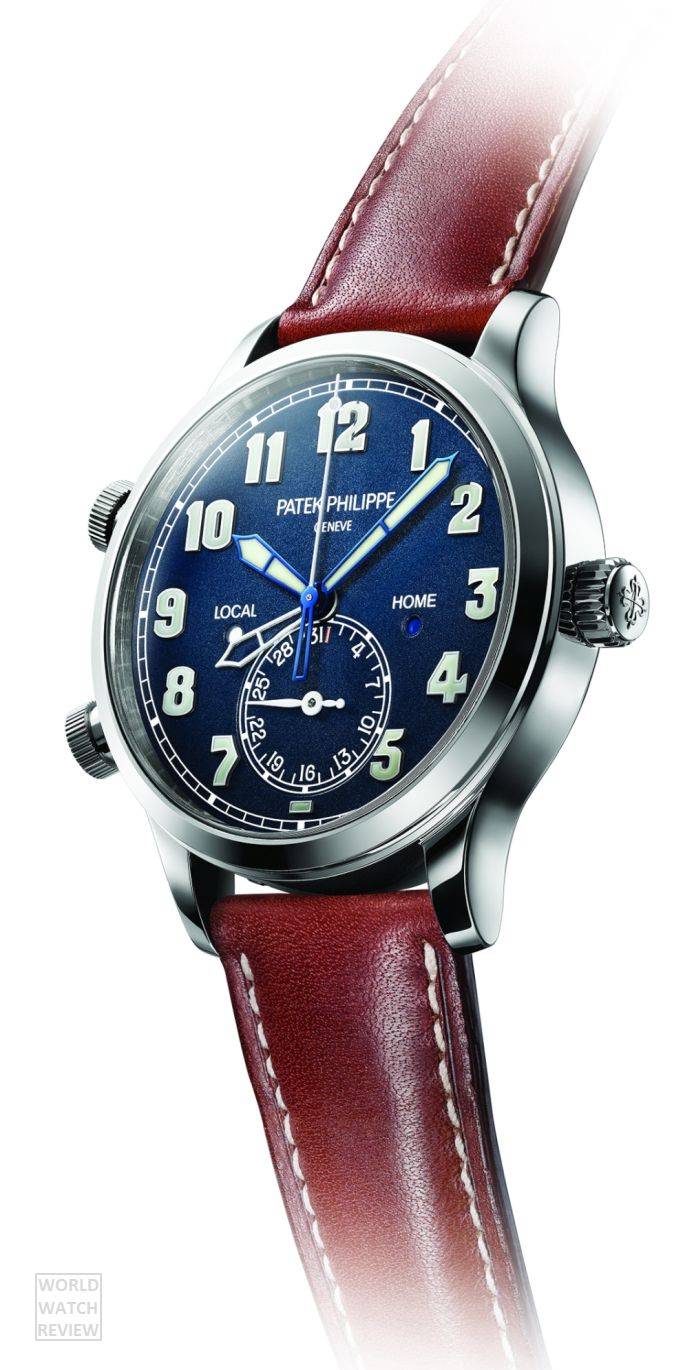
See also: Patek Philippe 10 Day Tourbillon 5101R in rose gold
Photos: Patek Philippe
WWR Verdict
Originality 4.5/5
Build Quality: 5/5
Versatility: 5/5
Usability: 5/5
Overall Legibility: 5/5
Nighttime Legibility: 5/5
Value for Money: 4.5/5
Overall Rating: 5/5
Patek Philippe Calatrava Pilot Travel Time 5524 specification
Movement: Automatic, Caliber 324 S C FUS, in-house, Gyromax balance, Spiromax Silinvar antimagnetic silicon balance spring, 294 parts, Swiss Made
Number of jewels: 29
Movement frequency: 28,800 vph
Power reserve: 35 – 45 hours
Movement decoration: “Cotes de Geneve” pattern on 18-karat gold oscillating weight and bridges, beveled bridges, polished screw heads
Functions: Hours, minutes, seconds, ‘local’ and ‘home’ time zone (GMT), date
Case: 18-karat white gold
Shape: Round
Size: 42.00 mm
Dial: Anthracite, sunray
Numerals: Arabic, luminous (varnished Superluminova)
Hour markers: White railway track
Hands: Blued, luminous; Open-worked ‘home’ hand
Water resistance: 30 meters
Strap: Brown calfskin leather strap with contrast stitching, 18-karat white gold buckle
Crystal: Sapphire, antireflective on both sides, box
Back: Sapphire
